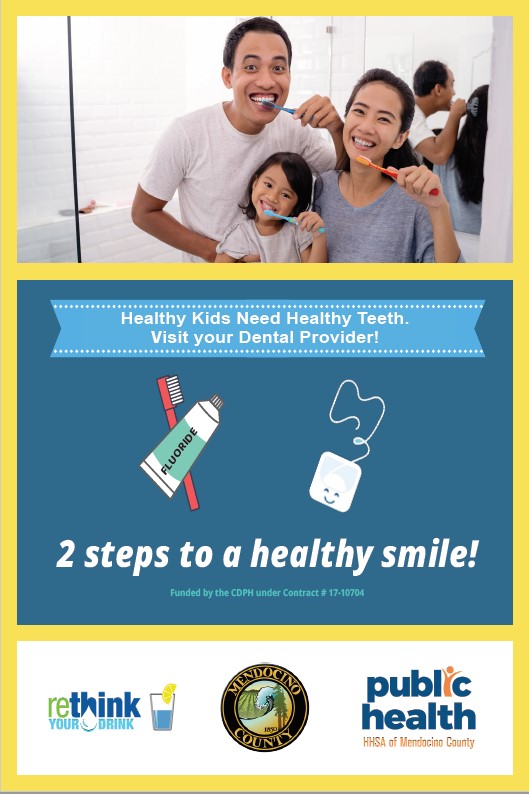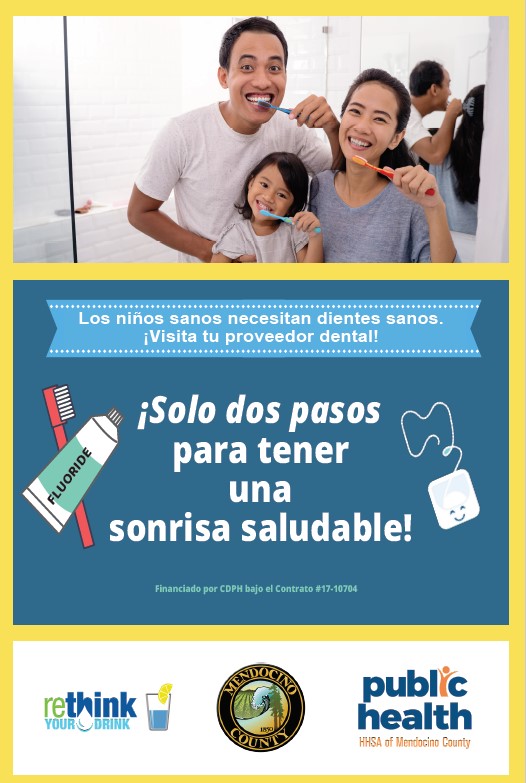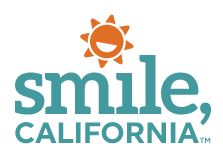

Attitudes and habits established at an early age are critical in maintaining good oral health throughout life. Parents can help their children avoid cavities by having them brush their teeth twice a day, cleaning between teeth daily, eating a healthy diet that limits sugary beverage and snacks, and seeing your dentist regularly for prevention and treatment of oral disease. These are the keys to a lifetime of healthy teeth and gums.
Sipping, Snacking and Tooth Decay
Many parents across the country will issue a common refrain at dinnertime tonight: ―You’d better eat that it’s good for you! There’s another old favorite in the parental arsenal of dietary admonitions: ―Don’t eat that it’ll rot your teeth! Now more than ever, kids are faced with a bewildering array of food choices from fresh produce to sugar-laden processed convenience meals and snack foods. What children eat and when they eat it may affect not only their general health but also their oral health.
Americans are consuming foods and drinks high in sugar and starches more often and in larger portions than ever before. It’s clear that junk foods and drinks gradually have replaced nutritious beverages and foods for many people. For example, in the U.S., on average, individuals consume approximately 50 gallons of sugary beverages per year! Alarmingly, a steady diet of sugary foods and drinks can ruin teeth, especially among those who snack throughout the day. Common activities may contribute to the tendency toward tooth decay. These include grazing habitually on foods with minimal nutritional value and frequently sipping on sugary drinks. Consuming too much sugar can also affect your overall health, such as becoming overweight/obese, or getting heart disease or type 2 diabetes.
When sugar is consumed over and over again in large, often hidden amounts, the harmful effect on teeth can be dramatic. Sugar on teeth provides food for bacteria, which produce acid. The acid in turn can eat away the enamel on teeth.
Almost all foods have some type of sugar that cannot and should not be eliminated from our diets. Many of these foods contain important nutrients and add enjoyment to eating. But there is a risk for tooth decay from a diet high in sugars and starches. Starches can be found in everything from bread to pretzels to salad dressing, so read labels and plan carefully for a balanced, nutritious diet for you and your kids.
Reduce your children’s risk of tooth decay:
- Sugary foods and drinks should be consumed with meals. Saliva production increases during meals and helps neutralize acid production and rinse food particles from the mouth.
- Limit between-meal snacks. If kids crave a snack, offer them nutritious foods.
- If your kids chew gum, make it sugarless. Chewing sugarless gum after eating can increase saliva flow and help wash out food and decay-producing acid.
- Monitor beverage consumption. Children should make healthy beverage choices such as water and milk.
- Help your children develop good brushing and flossing habits.
- Schedule regular dental visits.
Sippy Cups and Your Child’s Teeth
As soon as teeth appear in the mouth, decay can occur. One of the risk factors for early childhood caries (sometimes called baby bottle tooth decay or nursing mouth syndrome) is frequent and prolonged exposure of a baby’s teeth to liquids, such as fruit juice, milk or formula, which all contain sugar.
Tooth decay can occur when a baby is put to bed with a bottle. Infants should finish their naptime or bedtime bottle before going to bed. Because decay can destroy the teeth of an infant or young child, you should encourage your children to drink from a cup by their first birthdays.
Many training cups, also called sippy or tippy cups, are available in stores. Many are no spill cups, which are essentially baby bottles in disguise. No spill cups include a valve beneath the spout to stop spills. However, cups with valves do not allow your child to sip. Instead the child gets liquid by sucking on the cup, much like a baby bottle. This practice defeats the purpose of using a training cup, as it prevents the child from learning to sip.
Don’t let your child carry the training cup around. Toddlers are often unsteady on their feet. They take an unnecessary risk if they try to walk and drink at the same time. Falling while drinking from a cup has the potential to injure the mouth.
A training cup should be used temporarily. Once your child has learned how to sip, the training cup has achieved its purpose. It can and should be set aside when no longer needed.
Tips
For sipping success, carefully choose and use a training cup. As the first birthday approaches, encourage your child to drink from a cup. As this changeover from baby bottle to training cup takes place, be very careful:
- what kind of training cup you choose
- what goes into the cup
- how frequently your child sips from it
- that your child does not carry the cup around
Talk to your dentist for more information. If your child has not had a dental examination, schedule a well baby checkup for his or her teeth. The American Dental Association says that it is beneficial for the first dental visit to occur before the child’s first birthday.

Please visit smilecalifornia.org for information on Medi-Cal Dental, also known as Denti-Cal. This program provides free or low-cost dental services to eligible children and adults who receive Medi-Cal, California’s Medicaid program.
